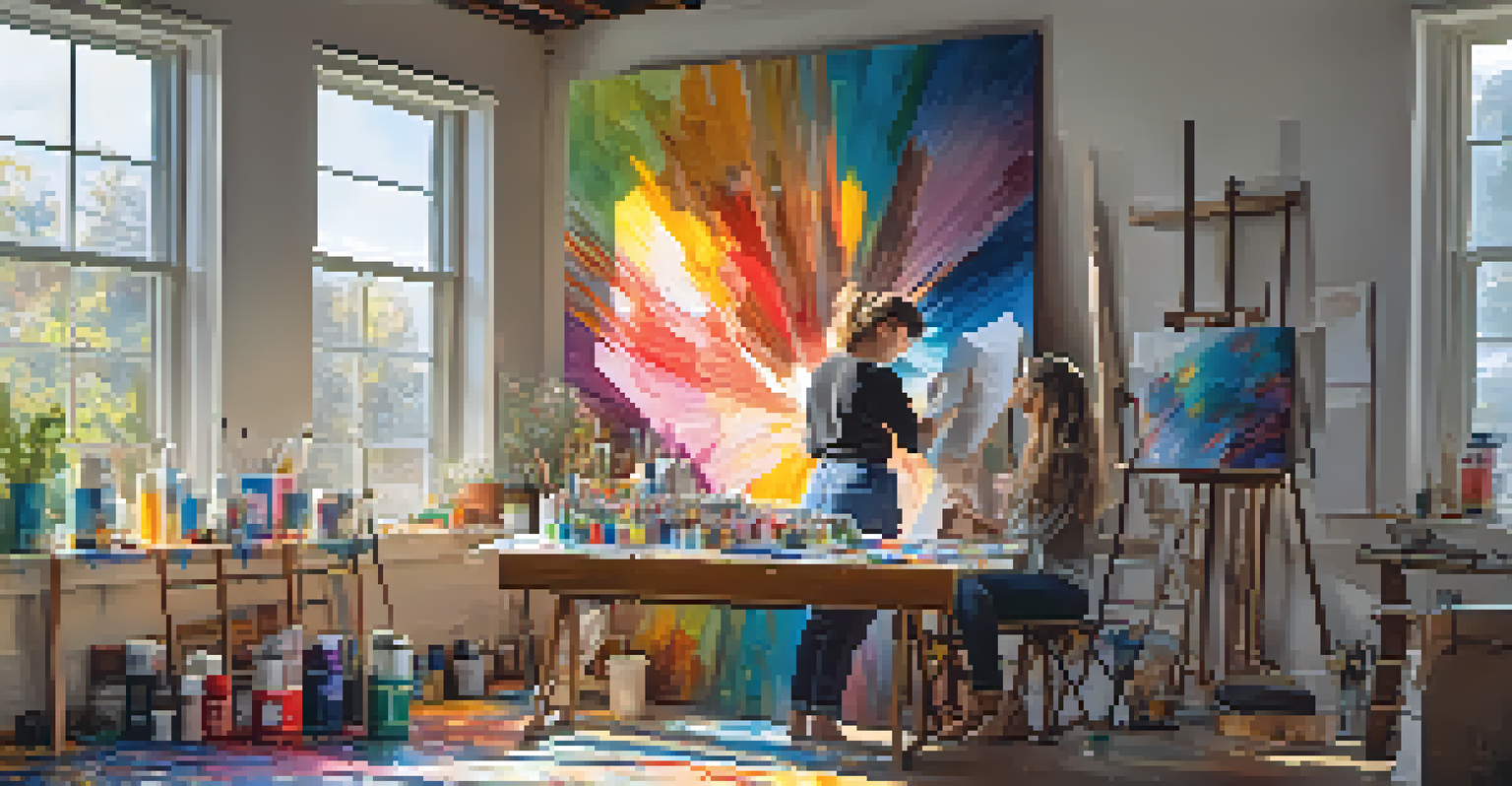Funding the Arts: A Critical Analysis of Current Strategies

The Importance of Arts Funding in Society Today
Funding the arts plays a pivotal role in cultural development and community engagement. It supports not only artists but also contributes to a vibrant economy through tourism and job creation. Without adequate funding, many art programs and institutions face the risk of closure or diminished quality.
Art is not a mirror held up to reality, but a hammer with which to shape it.
Moreover, arts funding can enhance education by providing students with opportunities to explore creativity and develop critical thinking skills. Studies show that exposure to the arts can lead to improved academic performance, fostering a generation that values innovation and expression.
Ultimately, investing in the arts is investing in the soul of our communities. It nurtures diversity, promotes dialogue, and reflects a society's values and aspirations, making it essential for a thriving culture.
Current Funding Models: An Overview
There are various funding models in place today, including government grants, private donations, and corporate sponsorships. Each model has its benefits and drawbacks, influencing how arts organizations operate and sustain themselves. Government funding often provides stability but may come with bureaucratic challenges.

On the other hand, private donations can offer more flexibility and creative freedom, but they also depend on the goodwill of individuals or foundations. Corporate sponsorships can boost visibility and resources but may require artists to align with specific brand values, which can lead to compromises.
Arts Funding Boosts Community Culture
Investing in the arts nurtures creativity, diversity, and community engagement, reflecting society's values.
Understanding these funding models allows stakeholders to navigate the complexities of arts financing better. By analyzing what works and what doesn't, arts organizations can develop strategies that maximize their potential while ensuring sustainability.
The Role of Government in Arts Funding
Government support for the arts is crucial, especially in times of economic uncertainty. Public funding can help level the playing field for smaller organizations that may struggle to attract private investment. This support is often realized through grants or subsidies that are designed to promote cultural initiatives.
The arts are an essential part of what it means to be human. They are critical to our society's future, and they need to be supported.
However, reliance on government funding can be a double-edged sword; changes in administration or policy can significantly impact grants and resources available to the arts. Artists and organizations must advocate for continued funding and demonstrate the benefits of art to society to secure this vital support.
In essence, a robust government role in arts funding not only promotes cultural initiatives but also reflects a commitment to community well-being and development.
The Impact of Corporate Sponsorship
Corporate sponsorship has become an increasingly popular source of funding for arts organizations. It provides financial backing that can support large-scale projects, exhibitions, and performances. However, this relationship can sometimes lead to ethical dilemmas regarding artistic integrity.
While corporate sponsors may bring in significant resources, they often have specific brand expectations that can influence artistic decisions. This pressure may lead to a compromise in creative freedom, as artists might feel obligated to cater to sponsor preferences.
Diverse Funding Models Exist
Various funding models like government grants, private donations, and corporate sponsorships each have unique advantages and challenges.
Balancing these interests is key for arts organizations. By establishing clear guidelines and maintaining open communication with sponsors, they can protect their artistic vision while benefiting from essential funding.
Crowdfunding as an Innovative Solution
In recent years, crowdfunding has emerged as a dynamic alternative for funding the arts. Platforms like Kickstarter and GoFundMe allow artists to connect directly with their audience, raising funds for projects through small contributions from many supporters. This model democratizes art funding and empowers creators.
Crowdfunding not only provides financial support but also fosters a sense of community and engagement. By involving their audience in the funding process, artists can cultivate a loyal following that feels personally invested in their work.
However, success in crowdfunding requires effective marketing and a strong online presence. Artists must be strategic in their campaigns, presenting compelling narratives that resonate with potential backers to maximize their funding potential.
The Challenge of Accessibility in Arts Funding
Accessibility remains a significant challenge in arts funding, as some artists and organizations struggle to secure resources compared to their more established counterparts. This disparity can stifle innovation and limit diverse voices in the arts. Ensuring equitable access to funding is essential for a vibrant cultural landscape.
Efforts to address this issue include targeted grants and initiatives that focus on underrepresented communities and emerging artists. By prioritizing diversity in funding, we can support a broader range of artistic expression and ensure that all voices are heard.
Accessibility is Key in Arts Funding
Ensuring equitable access to funding is crucial for supporting diverse voices and fostering innovation in the arts.
Creating an inclusive funding environment not only enriches the arts but also promotes social equity. As we rethink funding strategies, it's imperative to prioritize accessibility and support the artists who reflect the full tapestry of our society.
Future Trends in Arts Funding
As we look to the future, several trends are likely to shape the landscape of arts funding. The rise of digital platforms and virtual events has opened new avenues for fundraising, enabling artists to reach wider audiences than ever before. This shift may change how traditional funding models operate.
Additionally, there is a growing emphasis on sustainability and social impact in funding decisions. Funders are increasingly interested in supporting projects that not only promote the arts but also contribute positively to society and the environment.

By adapting to these trends, arts organizations can position themselves for success in a rapidly evolving landscape. Embracing innovation and staying attuned to the needs of their communities will be key in securing future funding.